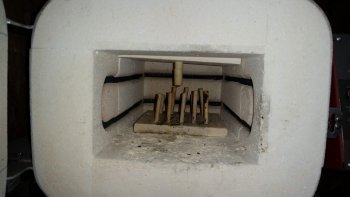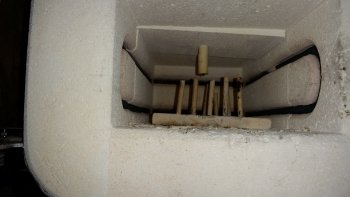M
Michael Minto
Guest
This week, when getting ready to use my Evenheat knife oven to harden a blade, I noticed two of the insulating bricks have come loose, and I'm afraid they are going to fall out. Anyone have a similar issue? I called Evenheat, and of course, they said they had never heard of this happening before (I get this constantly, nobody has ever seen things that happen to me - drag). Anyway, I feel their warranty is basically worthless in such a situation - unless it gets much worse - if it would still be in effect at the time I needed it. The cost of having the thing professionally packed, and then shipped to them and back, with downtime, would be too much. The oven still works fine, but has me worried. This is my second Evenheat, and I think I'm going to try a different brand when the need arises.



